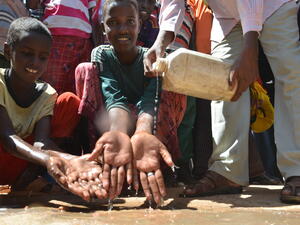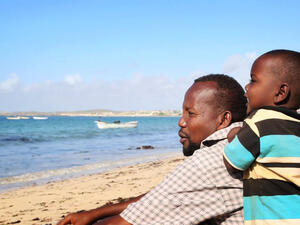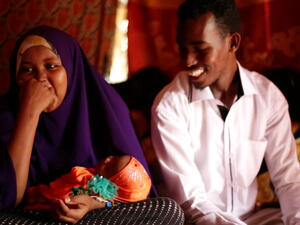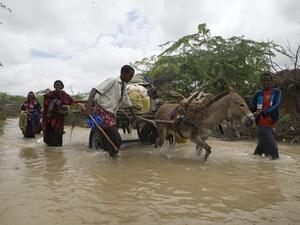Dramatic rise in Somali numbers fleeing to Kenya
Dramatic rise in Somali numbers fleeing to Kenya
The number of Somali refugees fleeing to Kenya has risen dramatically in the last two days, pushing to more than 30,000 the total number of new arrivals this year. Since Wednesday, we registered a total of 2,069 Somali refugees arriving through Liboi and Amuma border crossings amid reports of an advance on several towns in the Juba Valley by fighters allied to the Islamic Courts Union (ICU). There are reports that Afmadow and Buale - both towns in the Juba Valley - were taken by the ICU early this week. These two areas have tens of thousands of internally displaced Somalis.
We are concerned that if the arrival rate of more than 1,000 people a day continues, it will severely strain our limited capacity in Dadaab. Beginning yesterday (Thursday), we are sending two reception teams to the border - one to Liboi and the other to Amuma. Because of the limited number of trucks available to us, we have not been able to transport to Dadaab all the refugees waiting at the Amuma border. Yesterday, Kenyan authorities had beefed up their presence in Amuma, deploying an immigration and health official to screen the new refugees and vaccinate children under the age of five. Administration police have also been sent there to control the large crowds. We had some problems with crowd control in Amuma yesterday as people scrambled for registration to get on to the few trucks available. However, calm returned when UNHCR staff explained the logistical constraints and assured the new arrivals that everyone would eventually be transferred to the camps.
If arrivals continue at Amuma, we will have to build a reception centre there. Another is already under construction in Liboi. Amuma, 80 km from Liboi, is a dusty, open area with no trees or shelter from the hot sun in Kenya's semi-arid north. We are also worried about the water situation in Amuma since the village supply comes from a water-pan that is replenished only during the rainy season. Villagers in Amuma have complained that the new refugees are using the water source, the only supply for drinking water, for bathing and laundry. There is potential for the outbreak of water-borne diseases.
About 20 per cent of those coming in through Amuma are urban merchants from Kismayo who say they have lost their businesses. The rest are herder families from Lower Juba. We are also now seeing more elderly people among the new arrivals. About 40 percent of those arriving in Liboi are Somali Bantus.








